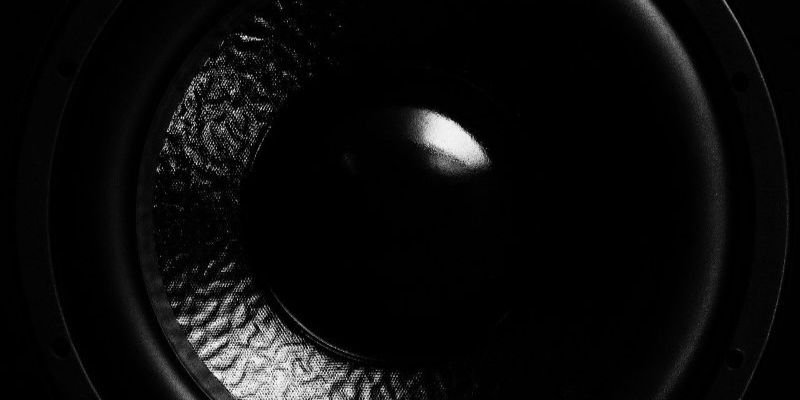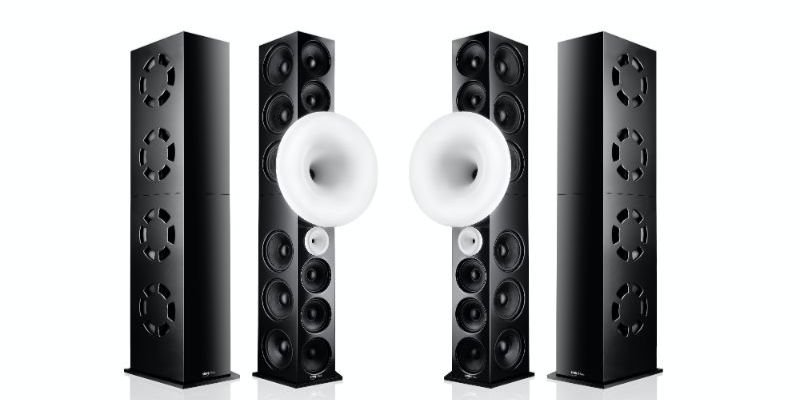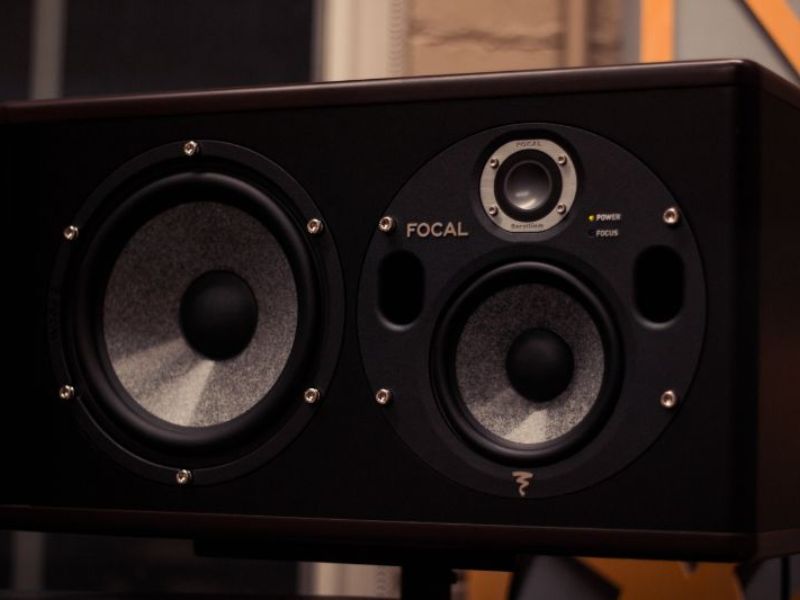What is a subwoofer?
The concept of subwoofers is to play the lowest of the low. Subwoofers are built with 20-100Hz’s in mind. They are now an essential component of almost all modern HiFi systems. They’re designed to play the lowest and deepest frequencies in the setup.
Subwoofers handle the Low-Frequency Effects (LFE) channels – the bass sounds which a traditional two-channel or surround sound can’t produce – and are now a standard part of any home cinema, speaker, or surround sound system. Learn more about bass and treble here.
They usually use a large woofer with a built-in amplifier to power the signal and provide those crisp, deep beats. Due to their nature, most subwoofers require their power supply.
What’s the difference between powered vs. passive-powered subwoofers?
There is a difference in the type of subwoofer which you can implement in your home:
What are powered subwoofers?
These subwoofers are housed within a box and tend to have their own amplifier/preamp. This drives the woofer, and the preamp is very useful for adjusting the sound. It filters out unwanted frequencies, equalizing sound, and accepting LFE.
What are passive powered subwoofers?
Instead of having their power source and amplifiers, passive powered subwoofers borrow power from the receivers. The good features of the powered subwoofers are lost due to their lack of ability to work independently. Asides from the filtering of unwanted frequencies, passive powered subwoofers are inferior to powered ones. They suffer from a lack of some key features which make powered subwoofers so good.
How do subwoofers work?
Let’s cover some of the more technical sides to subwoofers. This type of speaker is connected directly to a preamplifier or audio receiver. This audio receiver’s job is to send the low-frequency effects to the subwoofer. These then convert the sound through a magnetic coil.
This magnetic coil causes a vibration within the driver’s cone, amplifying the current. This vibration ultimately produces low-frequency waves to be sent through the air and into the listener’s ear.

Why buy a subwoofer?
The clear answer to this and is that the subwoofer enhances all of the sound systems in general. It provides the bass frequencies and allows the other speakers to focus on different frequencies they perform better.
Musical artists or film directors often include heavy bass in their art. If you are consuming the entertainment without this, you are not experiencing it how the creator intended. So even if you are into spinning the latest softboi record, listening to Pink Floyd or watching niche indie films, incorporating a subwoofer into your system allows the overall performance of your speaker setup to improve.
Types of subwoofer
Sealed box subwoofer
This is your bog-standard subwoofer but falters when it comes to very bass-heavy sounds due to the enclosure of sounds.
Ported box subwoofer
Most subwoofers opt for this design nowadays – it essentially means there is a hole (or port) in the speaker, which acts as a perfect way to get lower bass and produce better sound quality.
Isobaric designed subwoofer
Isobaric designed subwoofers have two speakers facing each other. This means the inwards facing speaker aids the reduction of harmonic distortion.
The way that isobaric designs subwoofers works allows for reinforced sound and canceling of distortion, which produces a clear and crisp base. However, when it comes to harmonic distortion, humans can’t physically hear it at the bass level, and harmonic distortion is by its self-proclaimed virtue, harmonic, and therefore pleasurable.
In layman’s terms, these speakers are almost too good at producing quality bass audio waves and are generally unnecessary.
How many subwoofers should I use?
A lot of subwoofers will ensure that the bass in your room is sufficiently pounding around the room. However, some lower standard subwoofers may need more than one to get the same effect. By ensuring there are more speakers, you evenly distribute the sound throughout the room, which everyone is after. After all, what’s the point in having a subwoofer if everyone in the room isn’t getting blown away by lightsabers clanking, Biggie Smalls spitting or Kraftwerk spinning on vinyl.
Multiple subwoofers reduce seat-to-seat issues in your surround sound setup. Despite this, if you invest in a solid, good subwoofer, you should not need more than one. This tier of subwoofer plays on the fact that the human ear, in theory, cannot detect where low-frequency sounds are coming from in the same way it can see higher frequency sounds.
This means speaker placement matters, but the subwoofer should be able to resonate throughout your living room. However, it’s important to remember the placement, alignment and setup of your subwoofer is invaluable to the sound you get out of the equipment.

Where should you place a subwoofer?
Subwoofers do not suffer from directional sound issues that higher frequency speakers do. This means that unlike right and left speakers, which need to be placed in the general direction and pointed in the right direction when placed within a room’s sound system, subwoofers do not require specific positioning.
This allows subwoofers to have an excellent level of flexibility, and even more so when the subwoofer is wireless, it can present you with endless opportunities for placement. There is a whole load of science and malarkey that you can go through to perfect the sound and high-fidelity audio coming from your subwoofer – but we can leave that audiophile stuff for another day, or you can read some of it here. Instead, experimenting with where the subwoofer sounds best is the way to get the most from it.
Of course, you will most likely be policing the subwoofer in a living space in your house, which means furniture and decor are necessary to consider. It is worth swapping some stuff about to find that subwoofer sweet spot, though. It may also be worth considering the acoustics of your room when it comes to subwoofer placement. Indeed, more generally, brushing up the acoustics in your room will mean that you will get more from your subwoofer.
So, now you’re a subwoofer expert
Subwoofers can be a great addition to your current sound system. They add depth and variety to your sound, providing a much better listening experience. Whether from the records you are spinning or from the films you have on. Subwoofers offer the best of the bass, building sound in your living room from the bottom up. It really allows you to appreciate art how the artist intended it.








